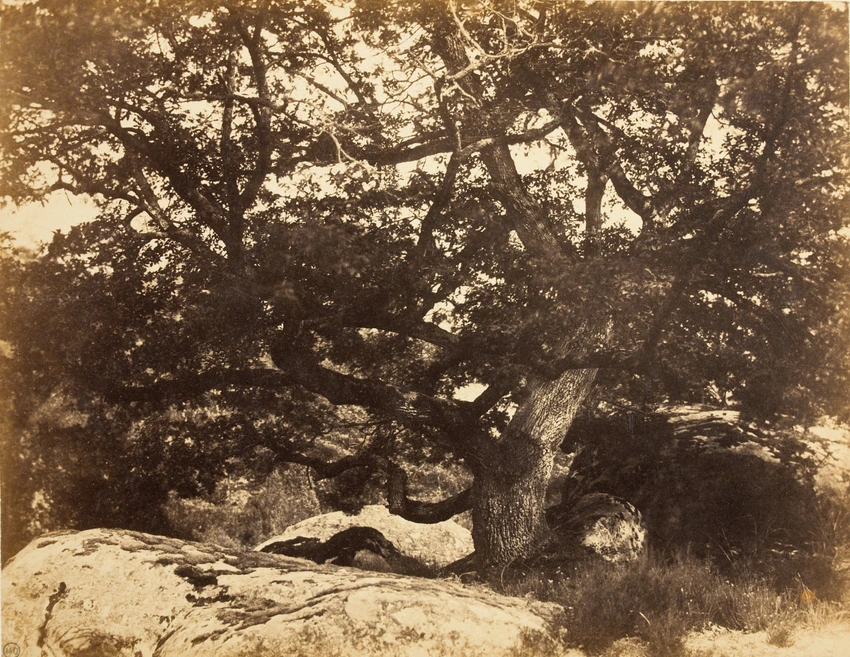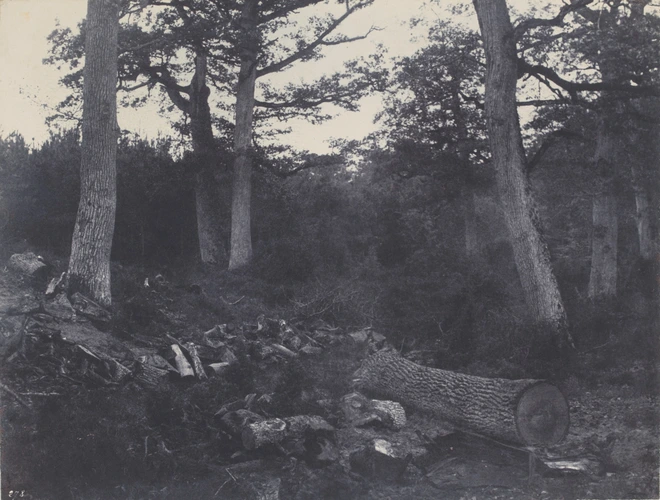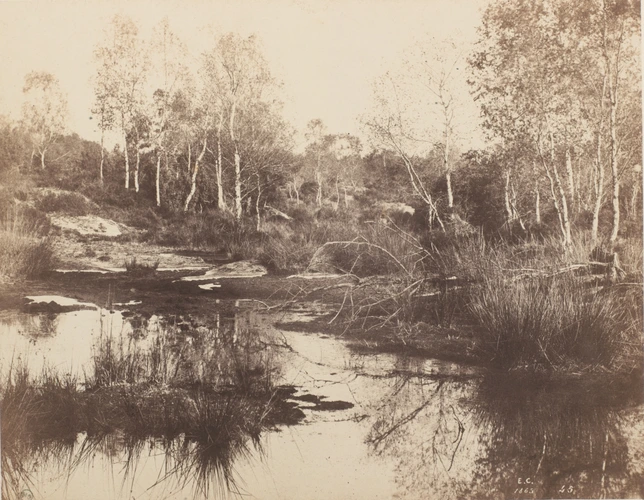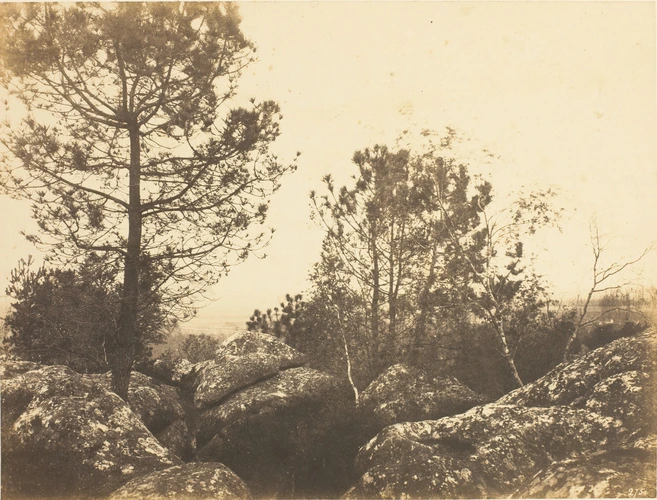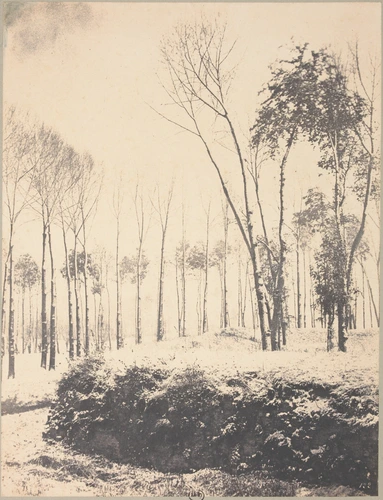Arbre et rocher à Fontainebleau
Eugène Cuvelier, a painter by training, learned photography from his father, Adalbert Cuvelier. He discovered the Forest of Fontainebleau through Camille Corot, and became a friend of Théodore Rousseau and Jean-François Millet. In 1859 he married Louise Ganne, the daughter of the owner of the inn where the Barbizon artists used to meet. He never moved away from the forest after that, and acquired an intimate knowledge of all its hidden corners. This inspired him and enabled him to reveal views of a secret, wild Fontainebleau, where the undergrowth covered the paths or where, as here, twisted trees force their way up between the rocks. By selecting original viewpoints, Cuvelier invented a whole new Fontainebleau landscape.
A tireless walker, he knew how to wait for the right moment, and paid particular attention to the light. By using paper negatives he was able to give his prints a depth and a velvetiness that softened the forms and toned down the contrasts. His photographs of nature, devoid of any human presence, are reminiscent of certain landscapes by Gustave Courbet. In fact, Cuvelier's close links with the Forest of Fontainebleau, his way of appropriating places, of presenting a vision both personal and accurate, evoke the relationship that the painter of Ornans established with his own native region.
